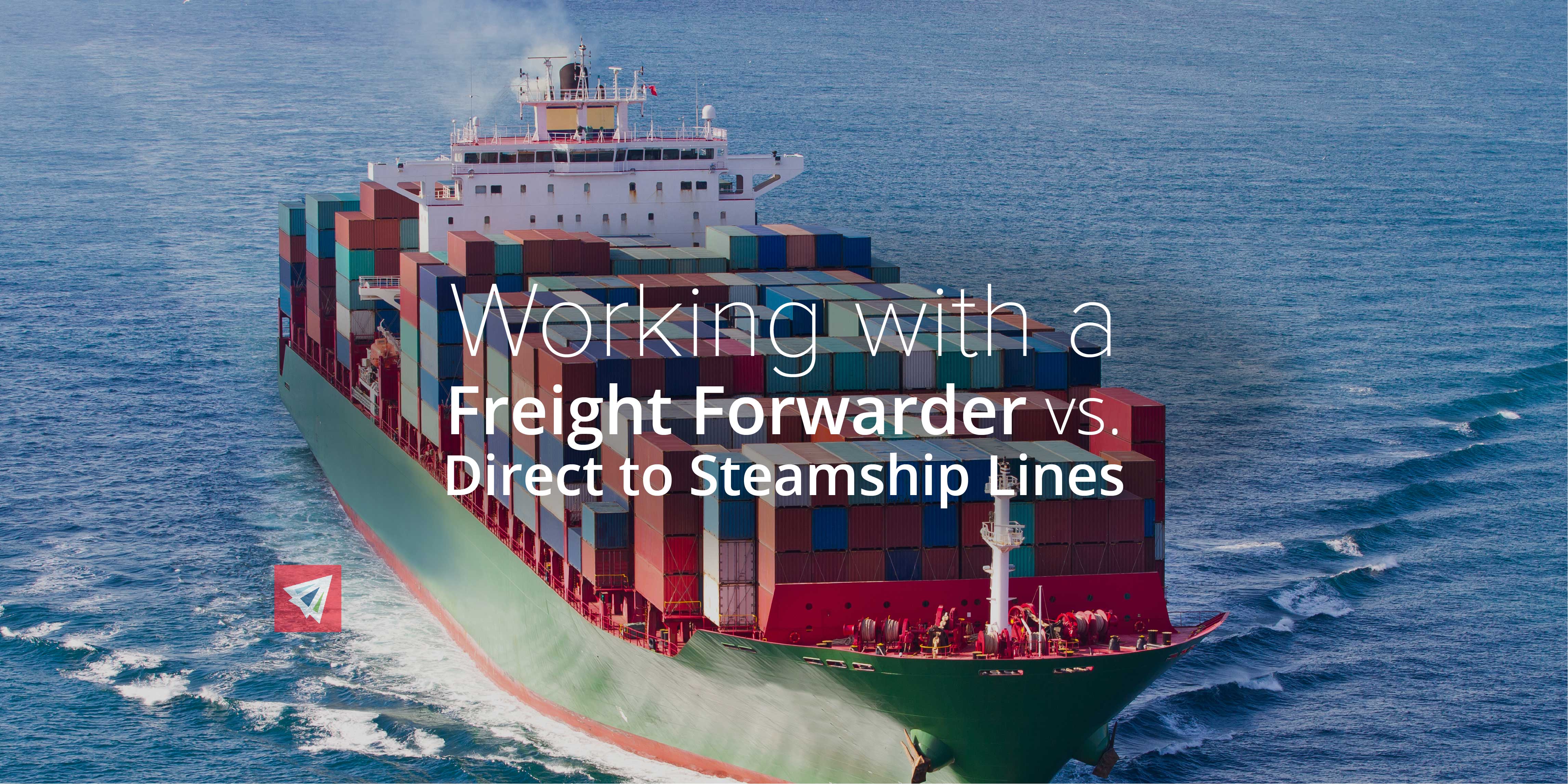Everyone knows that freight forwarders play the role of a “middleman” in the transportation process. People come to us, we go to our carriers, and finally offer a rate for the service. However, many businesses wonder if going directly to steamship lines is a good option for their company. Doesn’t working with a middleman mean unneeded additional costs?
Well, not necessarily. Let’s elaborate.
Going Directly to Steamship Lines: Are You Qualified?
What many people don’t realize is that they may not even be qualified for going directly to steamship lines for quotes. Steamship lines are dealing with thousands of high-volume customers, and their customer support simply isn’t big enough to handle quote requests and contracts with most small to medium-sized businesses.
While every steamship line may have slightly different numbers, you can guarantee that you will need at least 250 FEU’s (forty-foot-equivalents) to negotiate a contract with a steamship line. Along with volume minimums, you will be required to have your own transportation department, customs broker in the office, and a compliance team.
“Qualified” Doesn’t Mean Lower Rates…
While the minimum FEU container volume required to negotiate a steamship line rate is around 250 containers, you may not even come close to touching the rates offered by freight forwarders. Here’s why:
Freight Forwarder Volumes
Freight forwarders negotiate volume contracts with steamship lines the same way you do. However, freight forwarders are dealing with dozens, hundreds, or thousands of customers. This means that their contracts with steamship lines are based on astronomically larger shipment counts than what most companies can offer. Although your steamship line contract quote may be based on 250 shipments, the average freight forwarder may be basing their contracted rates on 30,000+ FEU’s. Freight forwarders are thus more qualified for going directly to steamship lines than most customers.
Limited Options
Remember, that 250 FEU minimum applies to your contract with a specific steamship line. Meaning, if you sign into this contract, you cannot leverage the benefits of working with multiple steamship lines. Often times ships get booked/filled and you are left without backup options. So if you are going directly to steamship lines, you’ll need to reserve 250 FEUs with multiple steamship lines.
Staffing
As previously stated, if you are going directly to steamship lines for rates, you will need your own team to handle the rest of the work. This means housing your own transportation department, customs broker, and compliance team. When done in-house, you can expect to hire a full-time in-house transportation team to handle your steamship line contract.
Is it Worth it?
All things considered, we can confidently say that going directly to the steamship lines for rate contracts is rarely the most cost-effective option. In fact, in every case other than those of large corporate businesses, working with a freight forwarder is almost always going to prove cheaper.
Benefits of Working with a Freight Forwarder
Freight forwarders can almost always negotiate better prices with their customers than steamship lines. As stated before, this is due to the high-volume contracts that freight forwarders make with SSL’s. Since freight forwarders are booking thousands of FEU’s with many different steamship lines, they get the added benefits of more options and lower prices. You may want to discuss whether a contract or spot rates will be more suitable for your business model, but either will be offered by a freight forwarder.
Conclusion
If you are looking to start shipping products or refine your current transportation process, keep the following tips in mind. Unless you are shipping over 250 FEU’s (forty-foot-equivalents) per year, going directly to steamship lines will not be an option, as you won’t be considered for a contract. However, even at 250 shipments per year, you will be receiving higher rates in your steamship line contracts than you would by working with a freight forwarder. The reason for this all boils down to volume. Freight forwarders benefit from large booking volumes, and their large shipment count also allows them to get low rates from multiple steamship lines. For those who work with freight forwarders, this means lower costs and more options for their freight.
Many people have questions about going directly to steamship lines. If you need any help with shipments, or would like to learn more about how contracts with freight forwarders and steamship lines work, give us a call and we’d be happy to help!

One thought on “Working with a Freight Forwarder vs. Going Directly to Steamship Lines”